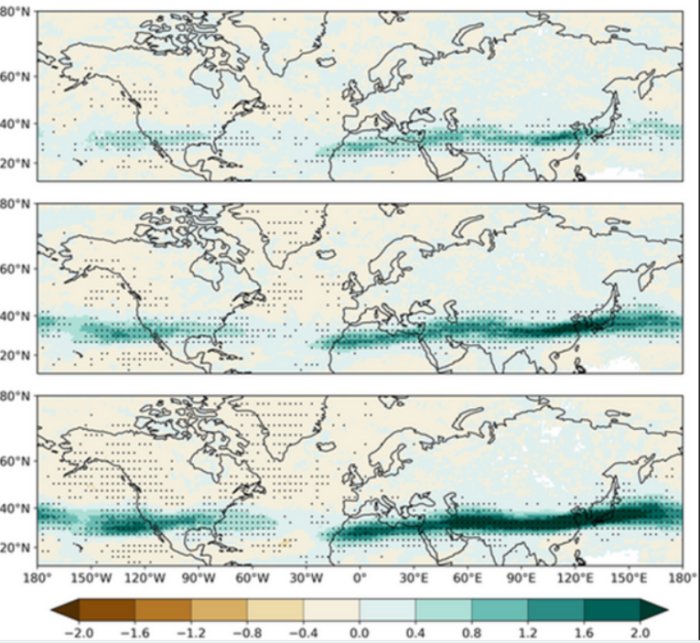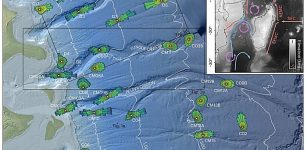Climate Change To Increase Flight Turbulence In Northern Hemisphere
Eddie Gonzales Jr. – MessageToEagle.com – Clear air turbulence, an invisible and unpredictable phenomenon, is projected to increase in the Northern Hemisphere due to climate warming. The study also found it has already risen in this region between 1980 and 2021.
The study builds on recent research by analyzing extensive data and running simulations to predict increases in moderate-to-severe clear air turbulence.
The results suggest clear air turbulence will increase in most regions affected by the jet stream, especially over North Africa, East Asia and the Middle East, and that the probability of clear air turbulence will increase with each degree of warming. While most people expect turbulence when flying in an airplane through a thunderstorm or over a mountain range, clear air turbulence hits aircraft unexpectedly. And unlike other, more obvious types of turbulence, there is no easy way to detect and avoid clear air turbulence.
“We know that clear air turbulence is the main cause of aviation turbulence, which causes approximately 70% of all weather-related accidents over the United States,” Mohamed Foudad, an atmospheric scientist at the University of Reading and the study’s lead author., sais in a press release.
Recent well-publicized encounters with clear air turbulence caused injuries on Singapore Airlines and Air Europa flights.
“We now have high confidence that climate change is increasing clear air turbulence in some regions,” Foudad said, adding that aviation engineers should account for an increase in turbulence when designing aircraft in the future.
Analyzing The Air
Clear air turbulence often occurs near jet streams—fast west-to-east air currents in the upper troposphere where commercial planes fly (32, 000-39, 000 feet). Planes may encounter vertical wind shear in these streams, causing clear air turbulence.
Climate warming will increase atmospheric energy, leading to faster jet streams and more vertical wind shears. Consequently, clear air turbulence, currently affecting planes 1% of the time in the Northern Hemisphere, is expected to become more frequent. Clear air turbulence occurs most often over East Asia, where the subtropical jet stream is strongest. Planes there may encounter moderate-to-severe turbulence about 7. 5% of the time.
Foudad and his colleagues used 11 climate models to determine past and future changes in clear air turbulence. To find future trends, the researchers performed 20 computer simulations under potential future warming increases of 1 degree Celsius (corresponding to current warming) to 4 degrees Celsius.
In most regions of the Northern Hemisphere affected by the jet stream, air turbulence will increase. In regions where clear air turbulence will increase the most, the study’s models agreed the most, which Foudad said indicates high confidence in the results. Past studies predicted increases in clear air turbulence over the North Atlantic in the future, but the new study was inconclusive for the region.
By reanalyzing atmospheric data from 1980 to 2021, the researchers found that moderate-to-severe clear air turbulence increased between approximately 60% and 155% over North Africa, East Asia, the Middle East, the North Atlantic and the North Pacific over the 41-year interval.
While past increases over North Africa, East Asia and the Middle East can be attributed to climate change, the researchers could not chalk up increases over the North Atlantic and the North Pacific to human-caused warming. Instead, climate variability in those regions could be hiding the signs of climate change’s effects.
Dangerous impacts of invisible turbulence
Clear air turbulence is difficult and expensive to forecast, and an increase in turbulence could pose a problem for aircraft safety.
Researchers suggest analyzing whether flying at different altitudes could improve safety. Although passengers may experience more turbulence in the future, but modern aircraft are designed to handle strong turbulence safely.
“We will see more of these accidents, but people should also be aware that aircraft are designed to resist the worst turbulence that could happen,” Foudad said.
Written by Eddie Gonzales Jr. – MessageToEagle.com Staff Writer











